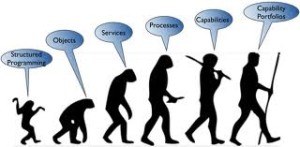Civilization – A report on Evolution and changes in generations
In these differences are to be found the evidences of an evolutionary process, in the course of which a disparity in structure and function, has developed between man and the great apes as a whole. By it man has been enabled to build up stage upon stage in the advancement of civilization, while his simian relatives have remained stationary in a state of arrested physical and mental development. At what stages in the line of common descent did these differences arise? When did man become specifically man, as opposed to the ape, and what were the causes which brought this about? The answers to these central problems are only imperfectly known as yet, but when brought into relation with the studies of the archeologist who seeks to trace the growth and development of man’s arts and industries in the past, they go far to explain how each development in the evolution of man’s form, acting and reacting on the development of his intellect, has enabled him to modify and exploit his environment to meet his needs, and thus to lay the foundations and build up the early stages of civilization, of which this modern world of ours is the outcome. Complex though modern civilization may be, it rest ultimately on the fundamental needs of humanity, needs which arise of the biological urge of the struggle of the individual towards self preservation and perpetuation of his race our everyday quest to provide food, shelter and family group, which no less insistently was the day to day problem of our remotest ancestor. In the study of the evidence for the origin and descent of man, two classes of facts have to be taken into account, the data of morphology, showing the changes in form which have taken place in the course of the evolutionary process, and the data of chronology, in which the evidence is arranged in order of time. This latter arrangement should show, if the interpretation is correct, the primitive forms as proceed in time the forms of more advanced type. There may be exceptions owing to special circumstances, as for instance when degenerations has taken place instead of an advance in type, but as a general principle the rule should hold good that the earlier in time, the more primitive in type. To appreciate clearly the relation to one another of the various examples of early types of primitive man which have been discovered, it is necessary that the methods by which these two classes facts are handled should be understood. Firstly, as regards the argument from morphology or the study of form. If we take an evolutionary series we find that in the course of generations of parents and offspring certain changes take place whereby the end products or last generation, though clearly related, differ in various respects from the first pair, or original parents from which the series begins, as well as from one another. In examining such a series it will be found that change proceeds by modifying a generalized or generic type into specialized or specific forms.

